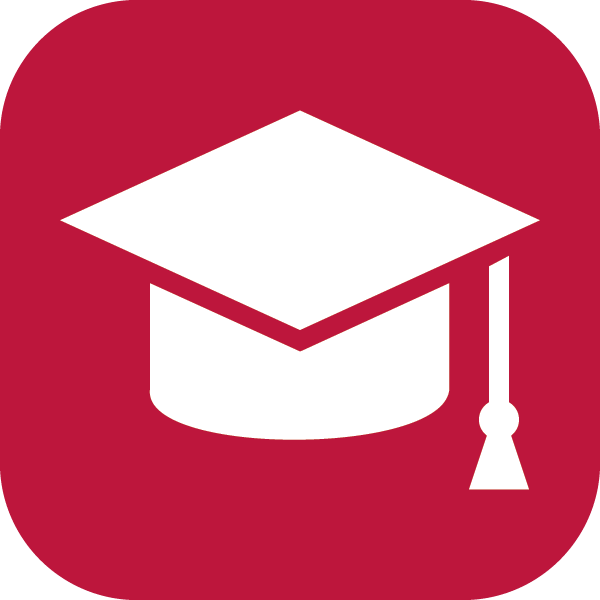- Columbus City Schools
- Our Future, Our CCS Workshop Series
School Realignment
Page Navigation
Board Goals and Guardrails
-

Columbus City Schools: Our Future, Our Success
As we move forward together, we're excited to share updates on our District's progress toward the ambitious goals set by the Columbus Board of Education. Our commitment to excellence is guided by clear objectives that ensure every student is supported and every region of our District thrives.
-

Strengthen Reading Proficiency
Increase the percentage of third-grade students proficient in reading on the Ohio State Test from 34.5% in school year 2022-2023 to 44.55% by school year 2028.
-

Strengthen Math Proficiency
Increase the percentage of seventh grade students proficient in math on the Ohio State Test from 14.7% in school year 2022-2023 to 23.45% in school year 2028.
-

Close Opportunity Gaps
Raise the percentage of students completing graduation requirements from 78.2% in school year 2022-2023 to 83.2% by school year 2028.
Goal 1: Strengthening Reading Proficiency
-
Where We Are Now
- Columbus students have shown more improvement in reading after the pandemic than students across Ohio. This is true for most grade levels.
- Most student groups kept some of their gains in reading, even though scores dropped statewide. Groups like Multiracial and English Learners had lower scores, but most other groups improved compared to last year.

-
Why Are We Seeing Growth?
- More students can understand stories, explain how characters’ actions affect the plot, use clues to figure out hard words, and see how authors organize their writing. This means students are building deeper reading skills and getting ready for state tests.
- Our teaching and support programs are helping students close gaps in reading.
-
Where Do We Need to Improve?
- Some students miss school often, which makes it hard for them to learn.
- There isn’t always enough time for extra reading support, with all of the other subjects that need to be taught.
- Students need more help with writing, like learning how to explain their ideas and use correct grammar.
-
What Works
We know that when teachers use the best reading strategies and follow the curriculum closely, students learn more. Our plan is to make sure every classroom uses these strong teaching methods.
-
What We Will Do
- Use a clear schedule for reading lessons that includes time for learning sounds and words, reading together, practicing in small groups, and writing every day.
- Give extra help to students who need it, using proven programs.
- Copy the successful practices from our top-rated schools (3-, 4-, and 5-star schools) and use them in all schools.
- Make sure teachers plan lessons carefully and use student data to adjust their teaching.
- Give students feedback and more writing instruction.
- Make sure all students get the help they need, no matter which school they attend.
-
Action Steps
- Improve Attendance: Work with families and the community to help students come to school every day.
- Support Teachers: Give teachers training and resources to use the best reading strategies.
- Monitor Progress: Use student data to see what’s working and make changes when needed.
- Family Engagement: Involve families in reading activities and support at home.
- Community Partnerships: Work with local organizations to provide more help for students.
-
In Summary
Columbus City Schools is working hard to help every third grader become a strong reader. We have made progress, but there is more to do. By using proven teaching methods, supporting teachers and students, and working with families and the community, we believe we can reach our reading goals.
Goal 2: Strengthen Math Proficiency
-
Where We Are Now
- Math scores have dropped across the country and in Ohio. Less than half of Ohio’s seventh graders are passing the state math test. In Columbus, our scores stayed about the same as last year, but we did not meet our target.
- Some student groups are doing better than others. For example, Asian or Pacific Islander students and Multiracial students have higher proficiency rates, while English Learners and Students with Disabilities need more support.
- Several schools in our district have already met or passed the seventh-grade math goal. These schools show that high-quality teaching and focused support make a big difference.

-
Why Is Math Challenging Right Now?
- The math test is tough. Students need to think critically, solve problems, and explain their reasoning—not just do simple calculations.
- The pandemic and other factors have made learning harder for many students.
-
What Works
Research shows that students learn math best when they talk about their thinking, solve problems together, and connect math ideas. Our plan is to make sure every classroom uses these strong teaching methods and follows grade-level standards.
-
What We Will Do
- Use high-quality math curriculum and materials in every classroom.
- Give extra help to students who need it, with special programs and interventions.
- Train teachers with professional development so they can use the best math teaching strategies.
- Involve families and the community with math guides and projects, like the Community Financial Literacy Project.
-
Action Steps
- Strengthen Tiered Supports: Make sure all students get strong math lessons (Tier 1) and provide extra help (Tier 2 and Tier 3) for those who need it.
- Engage Families and Communities: Give families resources and support so they can help their children with math at home.
- Support Teachers: Help teachers and substitutes get the training they need, including pathways to become licensed math teachers.
- Recognize Success: Celebrate schools that have met or passed the math goal to inspire others.
-
Investments & Timeline
- Over $1 million has been invested in math curriculum, teacher training, and family engagement, thanks to community support.
- Since 2018, the district has audited and improved its curriculum, adopted new resources, and set clear goals.
- This year, the focus is on professional development and family engagement. In the coming years, the district will deepen these practices and continue to train teachers in advanced math strategies.
-
In Summary
Columbus City Schools is working hard to help every seventh grader become strong in math. We have made progress, but there is more to do. By using proven teaching methods, supporting teachers and students, and working with families and the community, we believe we can reach our math goals.
Goal 3: Closing Opportunity Gaps
-
Where We Are Now
- Our graduation rate for 2025 is 81.4%. This meets our goal for this year. We are proud that most student groups either met or went beyond the district goal.
- This year, we had the largest graduating class since the pandemic, with 2,542 graduates.
- Six out of ten student groups met or exceeded the district goal. All groups kept most of the gains from last year.
- Some groups, like Hispanic students and English Learners, had lower graduation rates this year. We know we need to do more to help these students.

-
Our Plan to Meet the Goal
We have a clear plan to help more students graduate and close opportunity gaps:
- Focus on Student Outcomes: We set strong goals and keep track of our progress. We work together and keep improving.
- High-Quality Learning: All schools are making sure students get great lessons in every classroom. Leaders and teachers get training to help them teach better.
- Flexible Credit Options: Students can earn credits in different ways, like through special programs (VCAP) that help them catch up or move ahead.
- Early Graduates: More students are graduating early. In 2025, 142 students graduated ahead of schedule, up from 96 in 2023.
- Support for All: We are making sure every student feels like they belong and gets the help they need. We have special teams to help students stay on track.
-
What Action Steps Are We Taking?
- Keep Monitoring Progress: We check our goals often and share updates with the community.
- Help Teachers and Leaders: We give teachers and school leaders training so they can help students learn better.
- Connect Students to Jobs: We help students find work opportunities and prepare for life after graduation.

